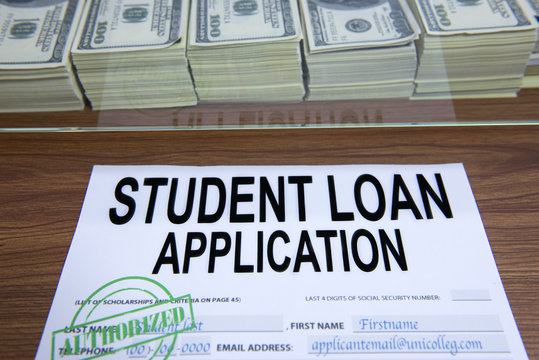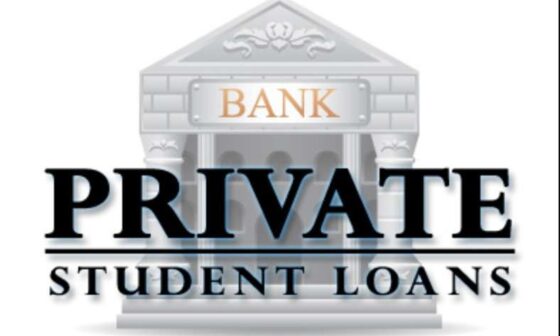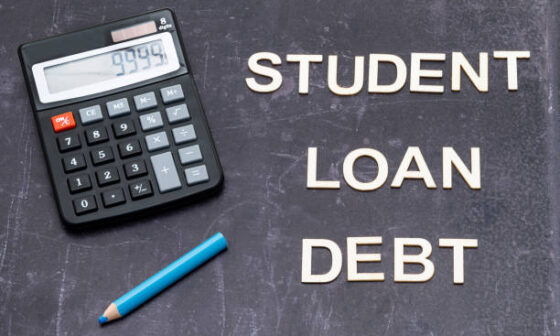Mastering Student Loans and Financing: A Complete Guide
Navigating the world of student loans and financing can feel like a high-stakes maze. One wrong turn and you’re looking at decades of payments, stress, and limited financial flexibility. But with the right knowledge, you can view student loans not as a burden, but as an investment tool when used wisely.
In this post, we’ll break down what student loans really are, the financing options available to you, what to watch out for, and practical strategies for borrowing and repaying smart. We’ll move from the fundamentals to actionable insights so you end with a clear roadmap.
What are student loans and financing?
When we talk about student loans and financing, what we really mean is: borrowing money (a loan) or acquiring funds (financing) to cover the costs of higher education tuition, fees, living expenses, books, travel, etc. The idea is you invest in your education now, with the expectation of greater earning power later, and then repay the loan after (or while) you work.
Here are the core components:
- Principal: the amount you borrow.
- Interest: the cost of borrowing that money.
- Repayment term: how long you’ll take to repay.
- Financing options: different types of loans, grants, scholarships, work-study etc.
For example, the Federal Student Aid program distinguishes between “subsidized” and “unsubsidized” loans where in the former the government pays interest while you’re in school, and in the latter you are responsible for interest from day one. (Federal Student Aid)
Understanding these basics sets up all the choices you’ll have to make.
Why it matters: the bigger picture
There are a few big reasons why your approach to student loans and financing can make a lasting difference:
- In the U.S., outstanding student loan debt recently reached $1.8 trillion.
- Interest rates for undergraduate federal loans disbursed between July 2025 and June 2026 are capped at 8.25%.
- The rules keep evolving: changes in legislation mean future borrowers might face very different terms.
In short: you’re not just borrowing for today—you’re shaping financial choices that can ripple for a decade or more. That means making informed decisions matters.
Types of student loans and financing
Let’s dig into the main types of loans and financing you’ll encounter, with a helpful comparison table to keep things clear.
Federal student loans
These are loans offered by the government (in the U.S. context) under a regulated framework. Benefits often include fixed interest rates, more flexible repayment options, and protections. Key varieties:
- Direct Subsidized Loan: – eligible students, government pays interest while you’re in school.
- Direct Unsubsidized Loan: – interest starts accruing immediately, even if you’re still in school.
- PLUS Loans: – for parents of undergrads or graduate/professional students; higher interest and fewer protections. (fsapartners.ed.gov)
Private student loans
These come from banks, credit unions or other non-government lenders. Key points:
- Typically higher interest rates and fewer flexible repayment options. Creditworthiness (or a cosigner’s) often plays a major role in approval and rate. Other financing alternatives
- Grants & Scholarships: – free money you don’t repay; always apply for these first.
- Work-study programs / part-time work: – help reduce the amount you borrow.
- Saving in advance: – even modest pre-school savings reduce the borrowing requirement.
- Income-share agreements (ISAs): – newer, less common; you repay a portion of future income instead of fixed loan.
Comparison table
| Option | Typical interest & terms | Flexibility / protections | When it’s best |
|---|---|---|---|
| Direct Subsidized Loan | Fixed rate (e.g., ~8.25% for undergrads) | High (government backing, in-school subsidies) | You qualify under income/need and want stable cost |
| Direct Unsubsidized Loan | Fixed rate, starts accruing immediately | Moderate | Need more funds beyond subsidized limits |
| Private student loan | Varies widely, based on credit & lender | Lower flexibility | After exhausting federal options |
| Scholarships/Grants | $0 interest, no repayment | Highest flexibility | Always first choice |
| ISA or alternative financing | Income-based repayment, novel terms | Varies | Consider if loan-averse or nontraditional path |
Smart strategies for borrowing effectively
Now that you know your options, here are practical strategies to help you approach student loans and financing with confidence.
1. Exhaust free money first
Before you borrow, make sure you apply for scholarships, grants, and work-study. Borrowing should be your last resort.
2. Borrow only what you need
Calculate total cost of attendance (tuition + fees + living expenses) and subtract what you can cover via savings, work and free money. The rest is your borrowing target.
3. Choose federal before private
Federal loans generally offer more protections (like income-driven repayment, loan forgiveness, deferments) than private loans. So prioritize them.
4. Understand the repayment landscape
Know how long you’ll have to pay, what your monthly payment might be, and how interest accrues. For example, the interest rate cap for certain federal undergraduate loans is 8.25% in 2025-26.
5. Create a budget and repayment plan
As one recent article puts it: create a budget once you know your loan amount and school expenses. Track monthly income, job prospects, and forecast how long you’ll carry debt.
6. Shop (within reason) for private loans if needed
If you do need a private loan: compare several lenders, look closely at rates, terms, cosigner options, potential discounts. 7. Monitor policy changes
The rules around student loans change often. For example, new legislation may alter repayment plans for loans taken out after July 2026. Staying aware lets you adjust proactively.
8. Aim to pay interest while in school if possible
Even if you’re in a loan period, paying the interest early prevents the balance from growing and reduces long-term cost.
9. Build good credit and borrowing habits
On-time payments and mindful credit use help your overall finances. Missed payments can damage your credit, raise future rates, and cause hardship.
Pitfalls to avoid when dealing with student loans and financing
Even with smart strategies, there are common traps people fall into. By being aware, you’ll avoid them.
- Don’t assume “all loans are the same.” Federal vs private terms vary widely.
- Avoid borrowing the maximum just because you can. More debt = more risk.
- Don’t skip reading the fine print around deferment, forgiveness, consolidation.
- Avoid relying on future loan forgiveness as your safety net—policies change. For example, new legislation alters repayment eligibility.
- Don’t delay budgeting and repayment planning—early action matters.
- Don’t ignore your loan servicer’s communications or default warnings. In 2025, the U.S. began resuming collections for federal student loans in default after years of pandemic relief.
How to approach repayment: from strategy to action
The borrowing is only half the journey. What you do after you graduate—or even while you’re studying—can make or break your financial outcome.
Develop a repayment mindset
- View your loan like a mortgage on your future: you’re investing in your ability to earn more.
- Aim to pay more than the minimum if you can: it shortens the term and reduces interest.
- Keep an emergency fund so you don’t default when unexpected expenses hit.
Use tools available
- Federal loans often qualify for income-driven repayment (IDR) plans, which adjust payments based on earnings.
- Consider refinancing (only with caution!) after you’ve built a track record and understand what you’re giving up in protections.
- Use online calculators to project payments under different scenarios—what if you earn X vs Y salary?
Evaluate repayment vs. career choices
- If your expected post-graduation income is low, you may need a longer term or alternate repayment plan.
- If your field is high paying, consider aggressive repayment—shorter term and big savings in interest.
Keep an eye on policy changes
As mentioned, legislation is evolving. The “Big Bill” (for new loans after July 2026) could reduce certain borrower protections. (Student Loan Borrowers Assistance) Being informed means you may be able to adapt your strategy—refinance early, lock in lower fixed rates, or seek counseling.
Real-world scenario: A Borrower’s Path
Let’s walk through a simplified example to see how the pieces come together.
Meet Sarah:
- Decides to enroll in a four-year bachelor’s degree program.
- Tuition and living costs: $30,000/year → $120,000 total (simplified).
- She secures $20,000/year from scholarships/grants and part-time work → total free funds $80,000.
- She needs $40,000 in total borrowing ($10,000/year).
Borrowing choices:
- She takes out $10,000/year in federal Direct Subsidized/Unsubsidized loans.
- While studying, she pays just the interest on the unsubsidized portion to keep the balance from growing.
- After graduation, she lands a job earning $50,000/year.
Repayment strategy:
- She selects a 10-year standard repayment plan, fixed payments.
- She budgets so that 10% of her gross monthly pay goes toward the loan (~$400-$450).
- She markets her budget and tracks progress: year 1, balance drops from $40k to $34k; year 3, to ~$24k; year 5, to ~$12k; year 10, paid off.
Outcome:
- She only paid interest for ~1-2 years before principal repayment.
- She avoided private loans, kept borrowing minimal, and had a built-in budget to handle repayment.
- Because she borrowed relatively little and chose federal loans, she maintained flexibility if she needed a pause (deferment/IDR) in future.
This scenario shows how student loans and financing, when done deliberately, doesn’t become a financial trap but a stepping-stone.
Key questions to ask before signing on the dotted line
Before you commit to a loan or financing plan, run through these questions:
- What is the interest rate, fixed or variable?
- Is the interest applied while I’m in school, or only after I graduate?
- What are the repayment terms (length, monthly payment, options)?
- Are there income-driven plans, deferment, or forbearance options if I hit hardship?
- If I take a private loan: what happens if I miss payments or need to pause?
- What is the total cost of this borrowing (how much interest over time)?
- Will my expected income post-graduation support this level of debt comfortably?
If you can answer these confidently, you’re in good shape.
Final Thoughts: Own your education debt, don’t let it own you
Borrowing for education is rarely optional anymore—but the good news is, it’s a manageable journey if you treat it with intention. By understanding the mechanics of student loans and financing, prioritizing free funding first, choosing federal options when possible, borrowing smartly, and planning repayment early, you give yourself the best shot at using debt as a tool not a burden.
Remember: the goal is not just to “get the loan” but to finish repayment without it dominating your life. That means thinking ahead—budgeting, staying informed on policy shifts, and making good borrowing decisions today for a freer tomorrow.
Take the reins now, so that your education empowers you—not limits you.







